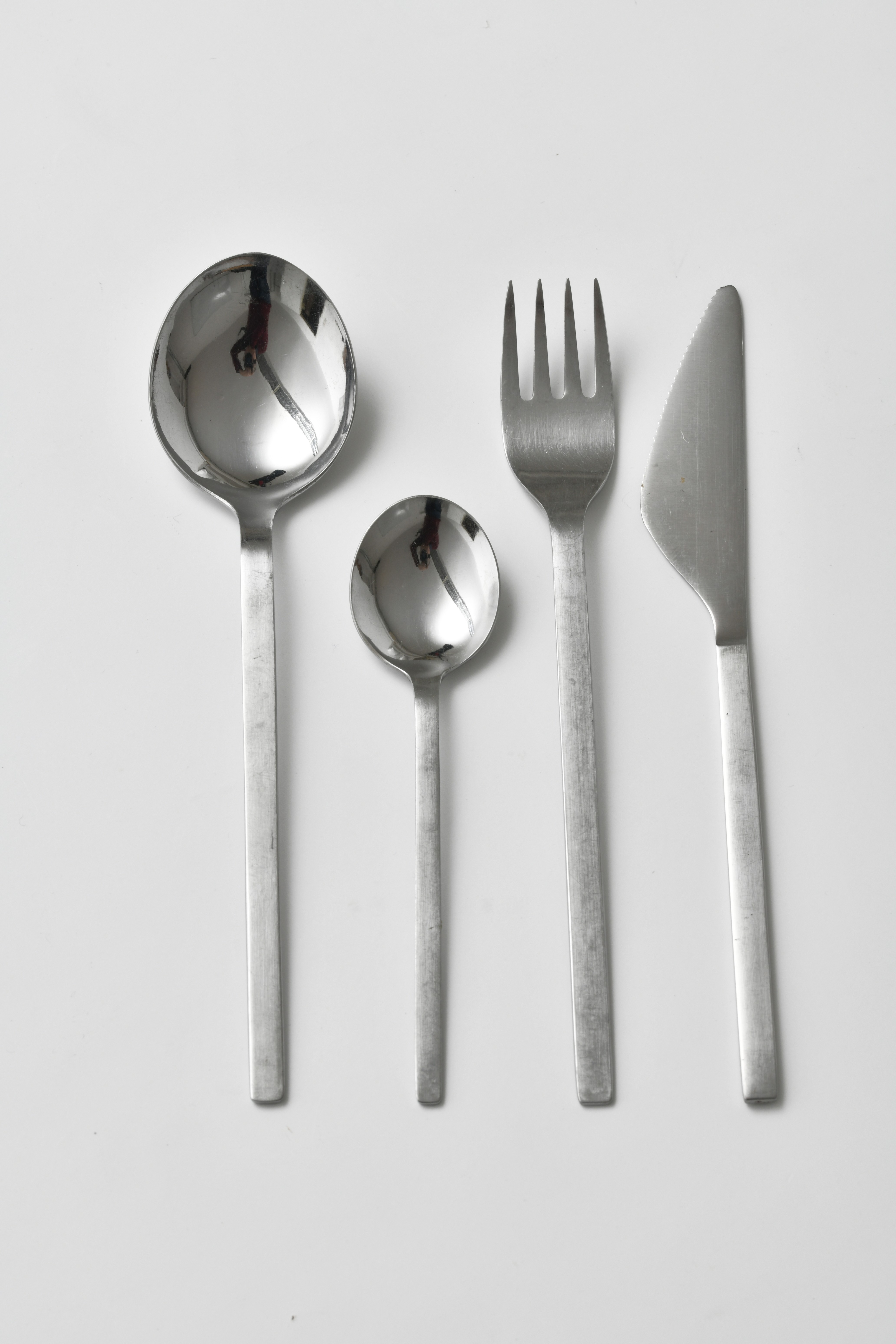Das Besteck besitzt einen sehr schmalen, geradlinigen Griff, der mit abgerundeten Ecken endet. Die Mulde des Suppen- und des Teelöffels nähert sich einer Kreisform. Das Messer hat eine einseitig bauchige Klinge. Auf der Rückseite der Griffe aller Teile, außer des Messers, ist der Name des Herstellers gepunzt.
Der minimierte, fast stäbchenförmige Griff mit rechteckigem Querschnitt sollte zur 'Entschleunigung' und damit zur Hebung der Tischkultur beitragen, da er bei hastigem Gebrauch leicht verkippt.
en

